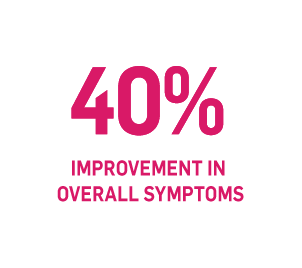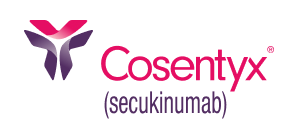For adults with active non-radiographic axial spondyloarthritis

HOW DOES COSENTYX® (secukinumab) WORK?
Watch the video to see how COSENTYX works by targeting IL-17A, a molecule in the body that causes inflammation in people with non-radiographic axial spondyloarthritis.†
Did you know an overactive immune system is like an overactive tennis ball machine? There are multiple molecules in the body that may play a role in causing inflammation. The IL-17A molecule is just one of them.
Patient portrayal of how COSENTYX works.
†The relationship between how COSENTYX works in the body and how it affects your symptoms is unknown.
How does COSENTYX Work?
COSENTYX is the most prescribed‡ biologic of its kind. COSENTYX is thought to help treat nr-axSpA by targeting a molecule called IL-17A. It's one of the molecules that could play a role in inflammation in people with non-radiographic axial spondyloarthritis. A biologic is a protein-based medication that is made from living sources and taken by injection or infusion. It’s the first and only treatment to offer both self-injection and IV infusion§ dosing options that target IL-17A.
‡Across all indications combined.
§For adults.
Why is it important to target and block IL-17A?
Although some IL-17A is normal, when there’s an overproduction of it, your body can become overwhelmed. This can lead to damaging inflammation, causing you to see and feel symptoms of nr-axSpA, like back pain, stiffness, and reduced mobility.

COSENTYX can help reduce
nr-axSpA symptoms so you don't have to fight as hard through your day.
In a clinical trial, many people taking COSENTYX saw at least a 40% improvement in overall symptoms at 16 weeks,|| with many continuing to see similar results at 1 year. ¶, #, **
||41% of people taking COSENTYX vs 28% taking placebo.
¶38% of people taking COSENTYX vs 19% taking placebo.
#Results shown in clinical trials using subcutaneous (SC) administration (injection under the skin). The FDA approval of the intravenous (IV) administration (injected into a vein) of COSENTYX is based on data showing that the amount of the medication in your body after it is given directly through IV was within the range that would be seen when given as SC.
**Administered subcutaneously (under your skin).
††Across all indications combined.
COSENTYX Experience
COSENTYX has a well-studied safety profile. In 2015, COSENTYX was FDA approved to treat adults with moderate to severe plaque psoriasis. In 2016, it was FDA approved to treat active ankylosing spondylitis and active psoriatic arthritis in adults. Then, it was approved in 2020 to treat adults with non-radiographic axial spondyloarthritis. It has since been approved to treat children with plaque psoriasis (6 and older), psoriatic arthritis (2 and older), and enthesitis-related arthritis (4 and older). COSENTYX was approved to treat moderate to severe hidradenitis suppurativa in 2023.
